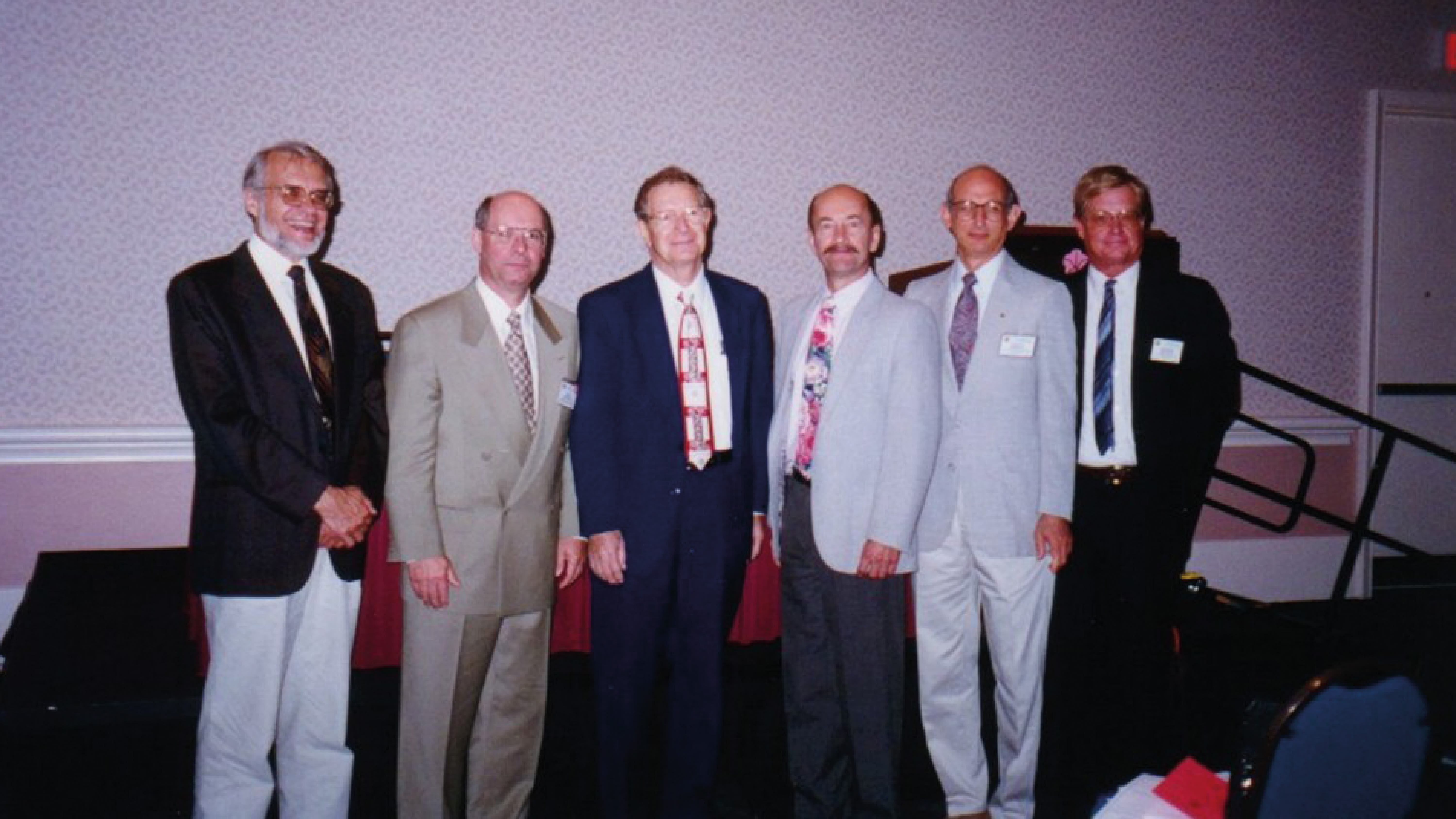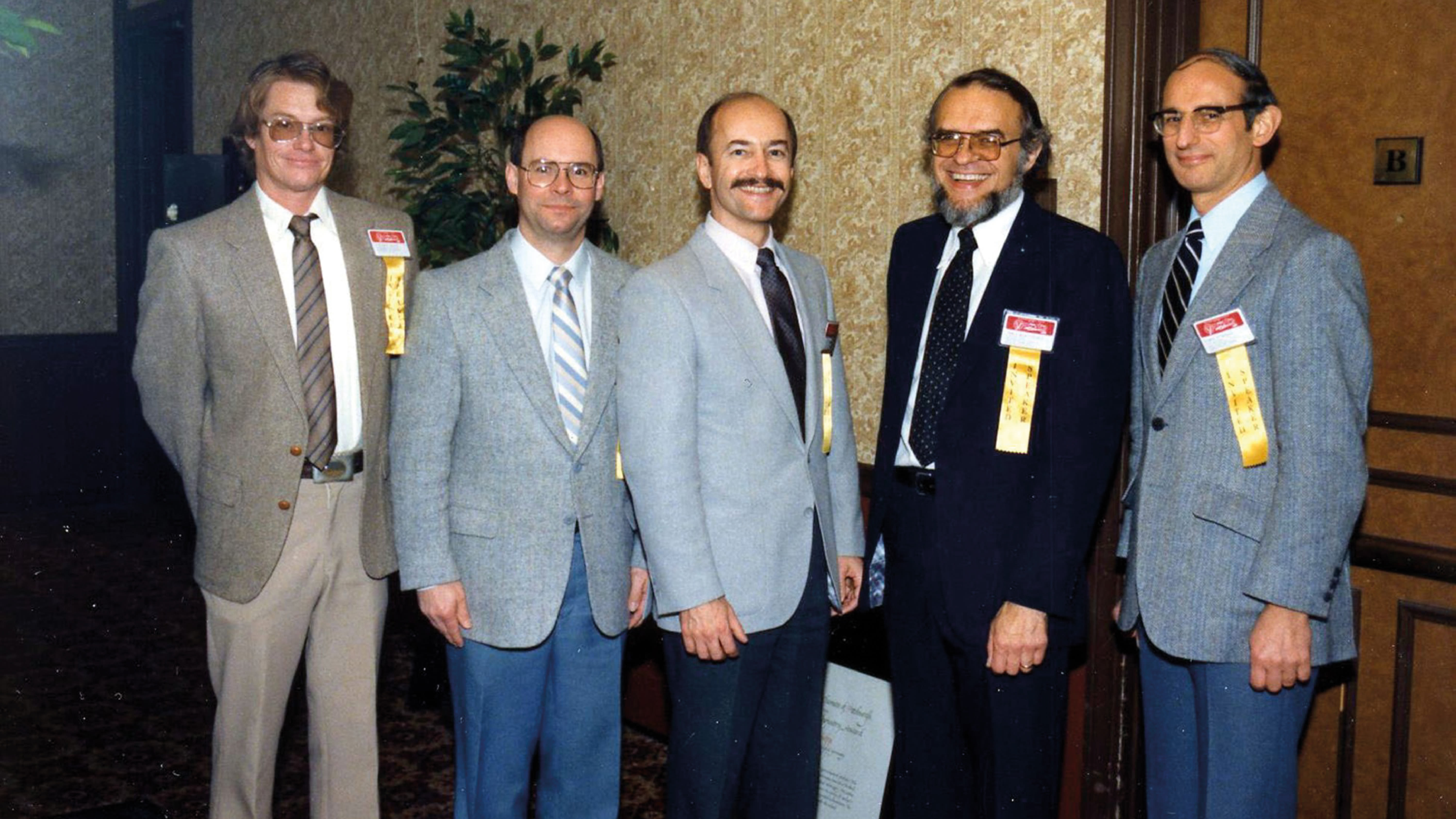
On October 6, 2025, science lost one of its giants, Professor James Dudley Winefordner. On that same day, I lost my most illustrious academic big brother – someone who served as a role model whose achievements I knew I would never be able to match. There will, without a doubt, be many tributes to Jim and numerous lists of his accomplishments, students, postdocs, scientific visitors, publications, and presentations. My comments below will be of a more personal nature.
Jim and I both worked for the same doctoral advisor, Professor Howard V. Malmstadt at the University of Illinois, and received our doctorates roughly a decade apart – Jim in 1958 and I in 1969. His impact on the Malmstadt group and on analytical chemistry at Illinois was inestimably greater than mine, not only because of his outstanding work but also because he earned all three of his degrees there – B.S. (1954), M.S. (1955), and Ph.D. (1958) – and completed a postdoctoral fellowship from 1958–1959. During this period, he also helped establish the “Electronics for Scientists” curriculum for which Malmstadt became justifiably famous.
Jim’s research in the Malmstadt group accompanied all these activities and included work on high-frequency titrations, AC spark analysis of molten beads, and null-point potentiometry. Altogether, Jim spent six years in the Malmstadt laboratory. As one of Malmstadt’s earliest doctoral students, he reported that he not only learned a great deal of science there but also learned how to direct a research group – to maintain close interaction, exhibit enthusiasm, offer encouragement in addition to advice, and to put people first and instruments second.
By the time I entered graduate school in 1965, Jim had been gone for six years – which seems relatively short in retrospect – yet he had already developed a highly active, well-funded, and prolific research group at the University of Florida, and had attained nearly mythical status at Illinois. With Jim as an example, it became almost unthinkable for any of Malmstadt’s students not to pursue an academic career and devote whatever effort was required to achieve that goal. We were also deeply influenced by the research areas Jim championed: atomic spectrometry, single-atom detection, atomic and molecular fluorescence, laser spectroscopy, fundamental studies of atomic methods, instrumentation development, and signal-to-noise enhancement and characterization. What better academic brother – what more appropriate hero – could anyone want?

Jim spent his entire academic career at only two institutions: the University of Illinois (1950–1959) and the University of Florida (1959–2025). Such dedication is perhaps unmatched in all of science. Interestingly, similar dedication is seen in others from the Malmstadt group, likely due in part to Jim’s influence. Ramon Barnes (University of Massachusetts), Gary Horlick (University of Alberta), M. Bonner Denton (University of Arizona), and I (Indiana University) spent most or all of our scientific careers at a single university. The resemblance of this group to a family can be seen in the attached photographs, something Jim himself often noted.
Let me close this remembrance with a personal note that I hope reflects what many others feel about Jim and his legacy. I learned from Laura, Jim’s wife, and Ben Smith, who is, I believe, Jim’s longest and closest friend and colleague at the University of Florida, that Jim had suffered a fall and broken hip on September 24, 2025. Hoping to cheer him up, I sent a note expressing my gratitude for his many contributions to science in general and to me personally.
The following letter was sent to Jim on September 26.
Dear Jim-
I learned via Laura and Ben Smith that you had a fall and suffered a broken hip. And here I thought you had finally given up competitive running!
Since I am at the keyboard, it is a good time for me to let you know what a tremendous impact you have had on my career and, indeed, on all of science. From my earliest days in the Malmstadt group, you have been one of my heroes, a fact that should be clear from the areas in which my research has been active, most of which mirror yours. Another aspect of yours that I have tried to emulate, albeit far less successfully, is in how you have generously mentored not only your own research students but also others in the scientific community. An example that has never left me is one that you have likely forgotten, during my last years in grad school. My parents had recently moved to Florida and, on the way to see them, I stopped in Gainesville, uninvited and unexpected, and showed up at your office door. You immediately dropped what you were doing and spent quite a bit of time talking to me and providing comments and suggestions. I left your office with an armload of reprints, all of which I read upon returning to Illinois, and then spent time with Tom O’Haver, one of your terrific group members. The time with you and Tom, and the substance of the reprints, helped move me toward research activities that were critical during my early days at Indiana.
In short, I am deeply grateful for the example you have set, for the outstanding research you and your group have produced, and your friendship.
Best wishes for a full and speedy recovery,
Gary
A Legacy of Illumination
A pioneer of spectrochemical analysis, James D. Winefordner advanced the fundamental understanding of detection limits and helped shape modern atomic and molecular spectroscopy. His work spanned instrumentation design, plasma- and laser-based spectroscopic methods, aerosol sampling, and theoretical modeling – contributions that remain foundational across trace-element analysis.
Over a career exceeding six decades, Winefordner published more than 900 research papers, authored seminal reviews, and delivered over 400 invited lectures around the world. His laboratory became a renowned training ground, producing 168 Ph.D. graduates, 32 M.S. graduates, and more than 100 postdoctoral researchers, many of whom became leaders in academia, government, and industry.
He served in prominent editorial roles – including long-term leadership of Talanta, Spectrochimica Acta B, and Wiley’s Chemical Analysis series – and held top offices in major professional societies such as the ACS Division of Analytical Chemistry and the Society for Applied Spectroscopy.
Winefordner’s scientific excellence was recognized with 23 national and international awards, including the ACS Award in Analytical Chemistry, the ANACHEM Award, and the Spectroscopy Society of Pittsburgh Award. His research program, supported by more than $25 million in competitive grants, consistently pushed the boundaries of sensitivity, selectivity, and instrumental innovation.




